|
In
light of the recent financial and economic woes, the
“bailout” of Fannie Mae and Freddie Mac, the recent
trillion
dollar mortgage “bailouts”, the crash of the housing market,
and the resulting huge swings in the stock market and the
predicted runs on banks, I felt it would be appropriate to
discuss The Federal Reserve System (aka “The Fed”) and its
history.
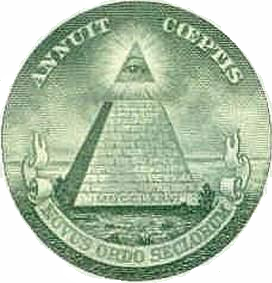 I
remember in 2008 when
Congress was attempting to pass the $700 billion “bailout,”
I was sitting in the San Antonio airport waiting for a
flight to Nashville. I watched several “financial experts”
express their opinions on the pros and cons of the bailout,
and as I listened, it seemed that at least once per sentence
someone would refer to “The Fed.” I had to chuckle to myself
as these supposedly sophisticated people (representatives
of our largest and most prominent financial institutions and
“think tanks”) were obviously ignorant of the truth
about “The Fed.” I
remember in 2008 when
Congress was attempting to pass the $700 billion “bailout,”
I was sitting in the San Antonio airport waiting for a
flight to Nashville. I watched several “financial experts”
express their opinions on the pros and cons of the bailout,
and as I listened, it seemed that at least once per sentence
someone would refer to “The Fed.” I had to chuckle to myself
as these supposedly sophisticated people (representatives
of our largest and most prominent financial institutions and
“think tanks”) were obviously ignorant of the truth
about “The Fed.”
You
see, the simple truth is that The Federal Reserve System is
neither
“federal,”
nor does it have any
“reserves.”
The Fed is a system of private banks, owned by
rich foreign and American bankers. It is the biggest scam
ever perpetrated upon the American people. The Fed is the
reason we have inflation and an enormous national debt,
which, by the way, will NEVER be paid off, since The
Fed would rather have the interest on the loan (the national
debt) than the principal, because they make trillions
of dollars from the US being in debt.
“But
wait a minute! Doesn’t the US government control The Fed?
Doesn’t the President appoint the Chairman of the Federal
Reserve?” Well, yes, the President does appoint the
Chairman…but NO, the US government does NOT control
The Fed. Quite the opposite. The Fed actually
controls the US government. Baron M. Rothschild once wrote,
“Give me control over a nation’s currency and I care not
who makes its laws.” Well, The Fed not only controls the
US currency, but it also controls our politicians.
THE
MEETING AT JEKYLL ISLAND:
Back
in 1910, Jekyll Island (an island off the coast of Georgia)
was privately owned by a small group of millionaires from
New York, including William Rockefeller and J.P. Morgan.
Their families would travel to Jekyll Island to spend the
winter months. There was a brilliant structure there, the
clubhouse, which was the center of their social activities.
The island has since been purchased by the state of Georgia,
converted into a state park and the clubhouse has been
restored. If you were to visit the clubhouse and walk
downstairs, you would come to a door with a plaque stating:
“In this room the Federal Reserve System was created.”
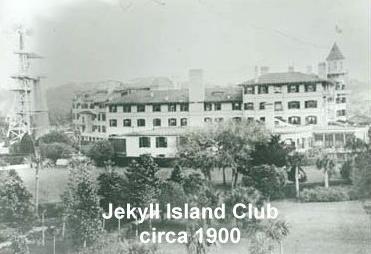 In
November of 1910, Senator Nelson Aldrich sent his private
railroad car to the railroad station in New Jersey. From
there, he and six other men traveled under the cloak of
secrecy to Jekyll Island. They were told to arrive
separately at the railroad station, not to eat together, not
to speak to each other, and to act like they were
strangers. They were told to avoid newspaper reporters
since they were well-known people, and reporters would have
wondered why these seven prominent men were all traveling
together. In
November of 1910, Senator Nelson Aldrich sent his private
railroad car to the railroad station in New Jersey. From
there, he and six other men traveled under the cloak of
secrecy to Jekyll Island. They were told to arrive
separately at the railroad station, not to eat together, not
to speak to each other, and to act like they were
strangers. They were told to avoid newspaper reporters
since they were well-known people, and reporters would have
wondered why these seven prominent men were all traveling
together.
Once
they got on board the train, the deception continued. They
were told to use first names only, not to use their last
names at all. A few of the men used pseudonyms. Once they
arrived at Jekyll Island, they spent over a week hammering
out the details of what eventually became the Federal
Reserve System. When they were done they went back to New
York.
After
the meeting at Jekyll Island, for several years, these men
denied that there ever was a meeting. It wasn’t until after
the Federal Reserve System was established in 1913 that they
then began to talk openly about their secretive trip and
meeting at Jekyll Island. As a matter of fact, they wrote
books, magazine articles, and gave interviews to reporters,
so now it’s possible to go into the public record and learn
exactly what happened there off the coast of Georgia.
WHO WERE THE SEVEN MEN?
Senator Nelson Aldrich, whom I have already mentioned,
was a Republican Senator and was the chairman of the
National Monetary Commission. He was also the very
important business associate of J. P. Morgan and was the
father-in-law of John D. Rockefeller, Jr. and was the
grandfather of Nelson Rockefeller.
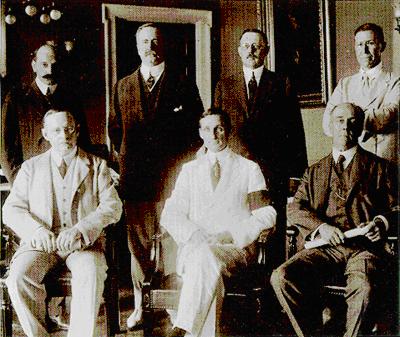 Also
in attendance at Jekyll Island was Abraham Andrew,
who was Assistant Secretary of the Treasury. Henry
Davison, the senior partner of the J. P. Morgan Company,
was in attendance, as was Charles Norton, the
President of the First National Bank of New York.
Benjamin Strong, the head of J. P. Morgan’s Banker’s
Trust Company, was at Jekyll Island, and in 1913, when the
Federal Reserve Act was passed, Strong became the first head
of The Fed. Also
in attendance at Jekyll Island was Abraham Andrew,
who was Assistant Secretary of the Treasury. Henry
Davison, the senior partner of the J. P. Morgan Company,
was in attendance, as was Charles Norton, the
President of the First National Bank of New York.
Benjamin Strong, the head of J. P. Morgan’s Banker’s
Trust Company, was at Jekyll Island, and in 1913, when the
Federal Reserve Act was passed, Strong became the first head
of The Fed.
Frank Vanderlip, the President of the National City Bank
(NCB) of New York, was an attendee at Jekyll Island. NCB
just happened to be the largest of all of the banks in
America representing the financial interests of William
Rockefeller and the international investment firm of Kuhn,
Loeb & Company.
Finally, there was Paul Warburg who was almost
certainly the most important at the meeting because of his
familiarity with banking as it was practiced in Europe.
Paul was one of the wealthiest men in the entire world. He
was a partner in Kuhn, Loeb & Company and was a
representative of the Rothschild banking dynasty in France
and England. He maintained very close working relationships
with his brother, Max Warburg, who was the head of the
Warburg banking consortium in Germany and the Netherlands.
These
were the seven men aboard that railroad car who were at
Jekyll Island. According to G. Edward Griffin, author of
The Creature from Jekyll Island, as amazing as it may
seem, they represented approximately 1/4 of the wealth of
the entire world! These are the men that sat around
the table and created the Federal Reserve System.
WHY WAS SECRECY IMPORTANT?
You
might ask, “What is the big deal about a group of bankers
getting together in private and talking about banking?”
According to Vanderlip, “If it were to be exposed
publicly that our particular group had gotten together and
written a banking bill, that bill would have no chance
whatever of passage by Congress.” You see, the purpose
of the bill was to break the grip of what was referred to as
the “money trust,” which was the concentration of
wealth in the hands of a few large banks in New York on Wall
Street . . . and it was written by the money trust!
Had that fact been known from the beginning, the US would
never have had a Federal Reserve System because as Vanderlip
said, Congress would never have passed it. It would have
been like hiring the fox to install the security system at
the henhouse. This was why secrecy was so important. The
goal was to create a “central bank” much like those in
existence in Europe for centuries.
How
could they conceal that from the American people? Congress
was already on record as saying they did not want a
central bank in America. Their challenge was to create a
central bank that nobody would know was a central bank. This
was their strategy: first, they would give it a name and
including the word “Federal” so that it appears to be an
official government entity. Then they would add the word
“Reserve” so that it would appear there were reserves
somewhere. Then, they would add the word “System” so that
it would appear that there was a system of regional banks
which would spread power over the entire country and remove
the concentration of financial power from New York City.
When you analyze it, you will realize that what they created
there was not federal, there are no reserves,
and it’s not a system at all in the sense of
diffusion of power. It was brilliant strategy.
CONVINCING THE PUBLIC:
The
next thing was to “sell” The Fed to the public. The first
draft of the Federal Reserve Act as it was presented to
Congress was called the Aldrich Bill (named after the
sponsor, Senator Nelson Aldrich). However, since
Aldrich was so identified with big business interests, the
people were outraged and Congress voted it down. But, just
like Congress does today, they took the bill, rearranged the
paragraphs, took Aldrich’s name off the bill and found a
couple of Democrats (Carter Glass and Robert Owen) to
sponsor the new bill. Since everybody “knew” that the
Republicans represented big business and that Democrats
represented the “common man,” this was a brilliant move. The
Aldrich Bill had morphed into the Glass-Owen bill, and the
new bill was perceived as being totally different from the
Aldrich Bill.
The
next step was for Aldrich and Vanderlip to give speeches and
interviews to newspaper reporters condemning the
Glass-Owen Bill. They would frequently state that the new
bill would be “ruinous to banking and terrible for the
country.” By the time the American public would read
that comment in the local newspaper, he would gullibly say,
“Gee whiz, I reckon if the big bankers don’t like the
bill very much then it must be pretty good.”
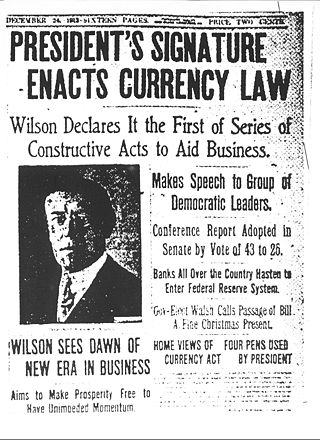 With
this kind of expert tactics and deception, the public didn’t
stand a chance. It is no surprise that popular support was
finally gained for the bill and on December 22, 1913 the
bill was passed by Congress and the following day was signed
into law by President Wilson. With
this kind of expert tactics and deception, the public didn’t
stand a chance. It is no surprise that popular support was
finally gained for the bill and on December 22, 1913 the
bill was passed by Congress and the following day was signed
into law by President Wilson.
As
author G. Edward Griffin states, “the creature from
Jekyll Island finally moved into Washington, DC.” After
the passage of the Federal Reserve Act, Congressman Charles
Lindbergh stated: “This Act establishes the most
gigantic trust on earth....When the President signs this
Act, the invisible government by the money power, proven to
exist by the Money Trust Investigation, will be
legalized....The new law will create inflation whenever the
trust wants inflation....From now on, depression will be
scientifically created.” That’s right, Lindbergh stated
that future depressions would be “created” by the bankers.
Louis
McFadden, Chairman of the House Banking Committee during the
1930s, said about the stock market crash of 1929: “It was
not accidental; it was a carefully contrived occurrence. The
international bankers sought to bring about a condition of
despair so that they might emerge as ruler of us all.”
Since 1913, the Federal Reserve Act has been amended over
100 times, with each amendment expanding the power and reach
of the Federal Reserve System to “create money out of
nothing.”
THE “MANDRAKE MECHANISM” - MONEY OUT
OF NOTHING:
The
passage of the Federal Reserve Act in 1913 was the beginning
of the partnership between a cartel of private bankers and
the US government. This is VERY IMPORTANT. Cartels
often go into partnership with governments because they need
the force of law to enforce their cartel agreement. I have
heard many economists refer to The Fed’s process of creating
money from nothing as the “Mandrake Mechanism” named after
the comic-book character of the 1940s, Mandrake the
Magician, who could create something out of nothing.
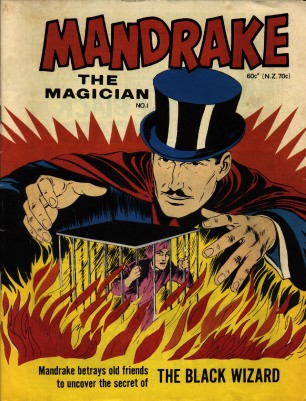 Let’s
take a simplified look and see how they create money through
the Mandrake Mechanism.
Here’s how it works. It starts with the government side of
the partnership, it starts in Congress which only knows how
to spend, spend, spend. Let’s say Congress needs an
extra billion dollars today so it goes to the treasury and
says “we need a billion dollars” and the Secretary of
the Treasury says “you’re crazy, we’re plum out of money,
we ran out of the tax money back in May.” Congress
then gets together and strolls down Constitution Avenue and
stops at the local Kinko’s and prints off some “official” US
Government bonds, which are really nothing more than fancy
IOU’s. After printing a billion dollars worth of these
bonds, they offer them to the private sector (i.e. the
American sheeple). Well, tens of thousands of Americans are
anxious to lend their money to the government, since they’ve
been told by their trusted investment advisors that this is
the most sound investment that you can make, since these
bonds are backed by the “full faith and credit of the US
government.” They’re not quite sure what that means but
it sure sounds good. Let’s
take a simplified look and see how they create money through
the Mandrake Mechanism.
Here’s how it works. It starts with the government side of
the partnership, it starts in Congress which only knows how
to spend, spend, spend. Let’s say Congress needs an
extra billion dollars today so it goes to the treasury and
says “we need a billion dollars” and the Secretary of
the Treasury says “you’re crazy, we’re plum out of money,
we ran out of the tax money back in May.” Congress
then gets together and strolls down Constitution Avenue and
stops at the local Kinko’s and prints off some “official” US
Government bonds, which are really nothing more than fancy
IOU’s. After printing a billion dollars worth of these
bonds, they offer them to the private sector (i.e. the
American sheeple). Well, tens of thousands of Americans are
anxious to lend their money to the government, since they’ve
been told by their trusted investment advisors that this is
the most sound investment that you can make, since these
bonds are backed by the “full faith and credit of the US
government.” They’re not quite sure what that means but
it sure sounds good.
Now,
after selling half a billion of US bonds, Congress still
needs more money…after all, they’ve got a spending
addiction. They’ve already milked the American public with
the issuance of the bonds, so the next day they stroll down
to the Federal Reserve building. The Fed has been waiting
for them – that’s one of the reasons it was created. By the
time they get inside the Federal Reserve building, the Fed
officer is already opening up his checkbook, and he writes a
check to the US Treasury for half a billion bucks.
WHERE
DOES THE MONEY COME FROM?
You
might be asking, “Where did The Fed get half a billion
dollars to give to the US Treasury?” Did they have
$500,000,000 in their account? The startling answer is
there is no money in the account at the Federal
Reserve System. NONE. In fact, technically, there
isn’t even an account, there is only a checkbook. That
billion dollars springs into being at precisely the instant
the officer signs that check and, if you remember in
Economics 101, that is what the professor called “monetizing
the debt.” This is how the government gets its instant
access to any amount of money at any time
without having to go to the taxpayer directly and justify it
or ask for it. Otherwise, they would have to come to the
taxpayer and say we’re going to raise your taxes another
$7,500 this year. Of course, if they did that, then the
American taxpayer would vote them out of office quick, fast,
and in a hurry. No, Congress really likes the Mandrake
Mechanism because it’s a “no questions asked” source of
instant cash.
Now,
this is where it really gets interesting. Let’s go
back to that half billion dollar check that the Fed official
just wrote. The Treasury official deposits the check into
the government’s checking account and all of a sudden the
computers indicate that the government has a billion dollar
deposit. So now the government can write a billion dollars
in checks against that deposit, which Congress does very
quickly, as they are going through withdrawals from not
having enough money for their “spending sprees.” For the
sake of our simplistic analysis, let’s just follow $100 out
of that half a billion. Let’s say Congress writes a $1000
check to Johnny, who cuts the lawn at the White House. He
gets a check for $1000, completely clueless that only a day
before, this money didn’t even exist, but he doesn’t care,
so he deposits it into his bank account. Now, the bank
manager sees that a $1000 deposit has been made he runs over
to the loan window and opens it up and says “Attention,
attention, we now money to loan.” Everyone is
thrilled since that’s one of the chief reasons that people
go to banks, right? They want to borrow money.
Well,
it just so happens that Freddie (Johnny’s neighbor) needs to
borrow $900 for a home renovation. The Federal Reserve
System requires that the banks hold no less than 10% of
their deposits in reserve, so the bank holds 10% of that
$1000 in reserve ($100) and it loans Freddie the $900 he
needs for his home renovation. What do you think Freddie
does with the $900? He wants to spend it so he puts it into
his checking account. When he puts this $900 into his
checking account, it’s considered a deposit, then the bank
is only required to keep $90 in deposits and can turn around
and loan out $810. The next fellow also needs a loan, so he
borrows the $810, deposits it into his checking account, and
then the bank has more deposits which can, in turn, create
more loans. At the end of the day, the bank can eventually
loan out $9000 based on the initial $1000 deposit, as a
result of the 10% fractional reserve requirement.
Where
did the $9000 come from? The answer is the same as when the
Fed officer wrote the check… there was no money. The
money is “created” precisely at the point at which the loans
are made. Think about this for a minute. This money was
created out of nothing and yet the banks collect interest on
it which means that they collect interest on nothing.
What a racket, huh?
MONEY SOUP:
But
the story doesn’t stop there. This newly created money goes
out into the economy and it dilutes down the value of
the dollars that were already out there. My lovely wife
Charlene cooks an amazing homemade chicken tortilla soup.
The broth is amazing. Now, if I were to add a gallon of
water to the cauldron, it would ruin the broth. But this is
analogous to what’s happening with the money supply.
Injecting this “money created from nothing” into the economy
is like pouring water into a wonderful pot of soup.
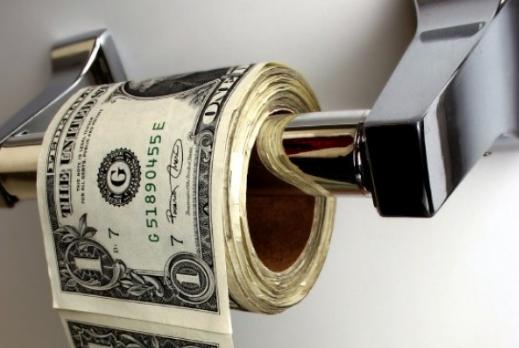 So
by throwing more and more money into the US “economic soup,”
the money gets weaker and weaker and weaker and we have the
phenomenon called inflation which is the appearance of
rising prices. But inflation is just the “appearance” of
rising prices. In reality, prices are not really rising.
Inflation is a result of our money falling in value, more
commonly referred to as the “devaluation of the dollar.” If
this dollar devaluation continues, our money will be more
useful as toilet paper than as a medium of exchange. So
by throwing more and more money into the US “economic soup,”
the money gets weaker and weaker and weaker and we have the
phenomenon called inflation which is the appearance of
rising prices. But inflation is just the “appearance” of
rising prices. In reality, prices are not really rising.
Inflation is a result of our money falling in value, more
commonly referred to as the “devaluation of the dollar.” If
this dollar devaluation continues, our money will be more
useful as toilet paper than as a medium of exchange.
And
with the recent housing crisis, I’m sure that you are all
familiar with the fact that, when you get that bank loan of
money created out of nothing, the bank wants something from
you. It wants you to sign on the dotted line and pledge
your house, your car, your inventory, your assets so that in
case for any reason you cannot continue to make your
payments they get your assets. The banks are NOT
going to lose anything on this. Whether it’s expansion or
contraction, inflation or deflation, the banks are covered
and we like sheep go right along with it because we haven’t
figured it out, we don’t know that this is a scam.
There
you have in a condensed form a crash course on the Federal
Reserve System. I can assure you that you now know more
about The Fed than you probably would if you enrolled in a
four year course in economics because they don’t teach this
in school.
CLOSING:
In
closing, let’s hear from one of the most influential
Founding Fathers of the United States:
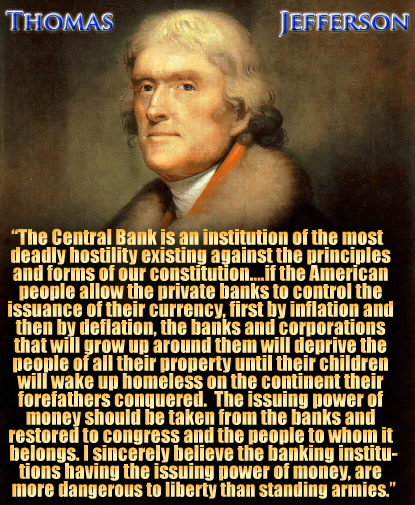
So, in
light of the recent financial chaos in America, I ask you
this question: Will the private bankers who own The Fed
help stabilize our markets?
I
leave you with this thought: In the Bible, we learn that the
debtor is a slave to the lender. That is the relationship of
the USA to The Federal Reserve System. In essence, we are
all slaves to the international private bankers who
own The Fed.
If you want to learn more about the Federal Reserve System,
I strongly recommend
The Creature from Jekyll Island
by G. Edward Griffin. It is the
“magnum
opus”
of books on this topic.
Until next time, thanks and
God bless you all.
And please
REMEMBER: Cancer does NOT have to be a death
sentence!
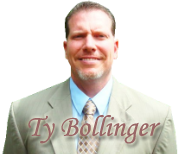
|